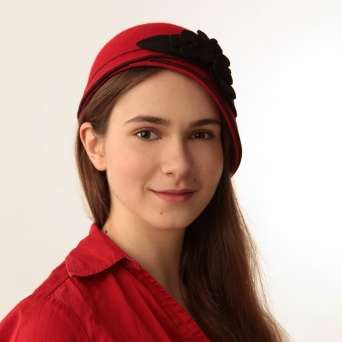You will not enjoy the Bayerische Staatsoper’s production of Die Soldaten. The music is ugly, the staging is brutally violent, and it all ends with ear-piercing shrieks. It’s not anyone’s idea of a relaxing evening out. Of course, if that is what you wanted, you would leave after seeing that the noisy overture is accompanied by groups of soldiers cutting bound, naked victims until they are covered in blood.
If, like me, you haven’t seen Die Soldaten before, you are probably wondering what sort of work would demand such a violent initial stage picture. In Zimmermann’s 1965 opera (based on a 1776 play by Lenz), Marie, a bourgeois girl, is loved by the tailor Stolzius and loves him in return. But when Desportes, a military captain and baron, begins courting her, her father persuades her to encourage his attentions. Desportes bores of Marie and passes her on to his military friends; she becomes a “soldiers’ whore”. Stolzius, who has been informed of Marie’s betrayal, has entered the regiment to find out what happened to her. Horrified by her fate, he poisons Desportes and himself. Marie ends up on the street, so changed that when she asks her father for alms, he does not recognize her. The opera finishes with a maddened onstage orgy of sex and violence, accompanied by the ever-louder tramping of soldiers’ boots, which suddenly turns into a primal scream.
Zimmermann initially wanted his opera presented on twelve stages surrounding the audience. This was rejected by Cologne Opera (who commissioned the work) as too difficult to realize, but the final version is not exactly easy to produce. The musical demands alone are enough to scare any sane opera house manager: seventeen punishingly difficult solo singing roles (plus eight silent roles and four dancing roles) and an orchestra so large it overflowed the Staatsoper’s pit into audience boxes, backstage, and onstage – requiring two assistant conductors! And then there’s the staging. Designer Harald Thor’s set involves a giant cross of nine movable concrete-and-wire cells. From these, characters can watch and react to others’ choices. We can also see multiple scenes play out simultaneously in different cells.
It would be impossible to adequately praise the singers in this production. Both the soloists and chorus have music that seems unsingable, with off-kilter lines that mix unpredictable intervals with Sprechgesang. They all handle it impressively. Every single singer is clearly audible over the large orchestra and demonstrates impeccable tonal precision. Okka von der Damerau stands out as Charlotte (Marie’s sister) for her warm, powerful sound. Nicola Beller Carbone’s Countess of la Roche is also especially fun to hear, as much for her imperious characterization as for her rich voice. As Stolzius, Michael Nagy shows off a smooth, flexible baritone that contrasts with his character’s jerky movements.
But this is Barbara Hannigan’s show. The role of Marie is written for the unusual Fach of “high dramatic coloratura soprano” and is demanding not only musically, but also dramatically and physically. Hannigan manages to look and sound like a teenage girl, while definitively singing music that demands mature technique. She rolls off her bed and throws herself off the ends of tables with a dancer’s grace. She brings such energy and charisma to Marie that it is difficult to look at anyone else when she is onstage.
The cast excel not only as singers, but as actors. Director Andreas Kriegenburg has chosen a non-naturalistic dramatic style. Each character displays exaggerated quirks and repeated gestures. It is a mark of good direction that the style is consistent across the cast: while each character is different, they all feel like they belong to the same surreal world. This surrealism matches the jerky, atonal quality of the music without making the characters’ plights any less relatable. Quite the opposite – the contrast between the puppet-like quality of their movements, which makes it seem as though they could not have acted otherwise, and the moments when it is clear that events could, in fact, have unfolded differently (for instance, when Marie watches her body double be raped by Desportes’ hunter) heightens the tragedy.
Although the singers and director accomplish extraordinarily difficult feats in realizing this opera, the most challenging task of all is likely the conductor’s. Zimmermann wrote a vocal symphony based on the themes of the opera partway through the composition process, simply to prove that the music was playable. Maestro Kirill Petrenko navigates the apparently impossible score with ease, drawing an extraordinary range of volumes and textures from his unusually large orchestra without ever overpowering the singers.
As the space I’m allowed for this review runs out, I notice that I have not yet mentioned the eerie bustle-era costumes (which look like they’ve been pulled from a Tim Burton film), the incongruous onstage jazz quartet, the terrifying ghostly projections of endless rows of soldiers, or the surprising use of speakers to provide surround-sound in the finale. There’s far too much I want to say about this opera and this production, but I will summarize it as succinctly as I can: It’s exactly as it should be. It isn’t beautiful. It’s horribly uncomfortable to hear and watch. But it’s impossible to look away.




